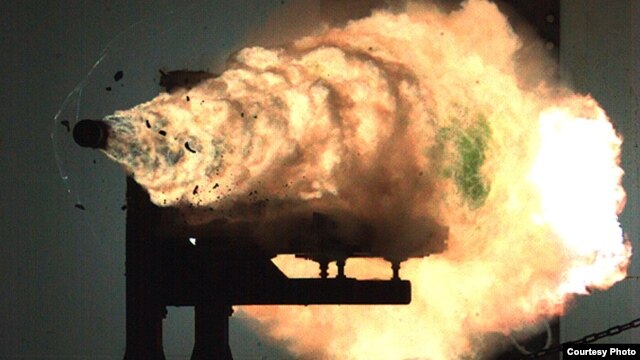The Defense Department's chief technology officer, Steve Welby, sat down with VOA to talk about some of the craziest and most remarkable breakthroughs being developed in military laboratories across the country. Here are some of our favorites.
Sense of touch
A program called Hand Proprioception and Touch Interfaces (HAPTIX) is making robotic arms even more true to life. "The next frontier is the work going on in programs like HAPTIX, where we're not just trying to restore the function of those limbs, but actually trying to restore the sensory function as well," Welby said. HAPTIX will be able to send information from the prosthetic limb back into the body, much like the nerve endings on fingers tell the brain how hard the hand is squeezing something, or how rough or smooth a surface is. Volunteers who thought they'd never have their sense of touch back are already experimenting with prototypes. "It's just an amazing idea that we're now being able to map that kind of two-way feedback into the nervous system," Welby said. "Being able to touch people's lives in these kinds of ways — it's really rewarding work."
Squid-inspired camouflage
Ever want to just disappear? A new type of camouflage will help soldiers blend in with their backgrounds, and even disguise themselves from infrared cameras. Researchers are focusing on a protein called reflectin, which is found on the skin of certain species of squid and octopus, and allows them to very quickly mimic their surroundings and virtually vanish from sight. Reflectin-based invisibility stickers could help the military control the reflectivity of people and equipment, and perhaps even allow thermal management. "We're now learning from nature and applying it in new ways," Welby said. "There are now some interesting prototypes that folks are playing with."
A record-setting firing of an electromagnetic railgun at Naval Surface Warfare Center, Dahlgren, Virginia
Faster than a speeding bullet
The Navy is using electromagnets to shoot projectiles at hyperspeed, many times faster than any bullet can be shot out of other guns. "That's important because it might allow one to be able to defend oneself against, perhaps, missiles that are coming at you, to be able to shoot them out of the air," Welby said. The new technology could also provide the ability to attack an enemy long before the enemy could engage U.S. service members. The gun creates the electromagnetic field used to fire a projectile by shooting an electric pulse down one negatively charged rail and one positively charged rail. It can fire a projectile at a speed of up to 7,400 kilometers per hour.
‘Language of the mind’
Since 2001, more than 250,000 U.S. service members have struggled with memory loss from traumatic brain injuries and degenerate brain problems. And it's not just a problem on the battlefield. Millions of people around the globe are affected by memory disorders from injuries and diseases such as Alzheimer's every year. The military is looking to help people retrieve memory through wearable systems that could restore function in parts of a damaged brain. "We're now decoding the language of the mind, how we actually store facts," Welby said. "It's an entirely new field, areas that we just didn't think were possible before." Researchers are working to understand the way the brain forms memories so that they can identify and correct problems when pathways to memories become damaged. Welby is among many who have had friends and family suffer from memory loss, and he says the hope that the research offers is "enormous."
Safer tanks



